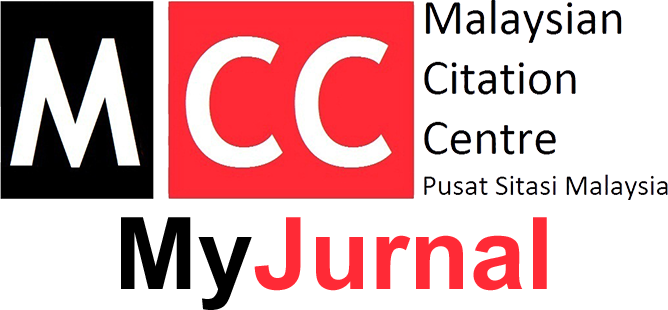POLICY AND SERVICES FOR STUDENTS WITH DISABILITIES
MATTERS ON STUDENT AFFAIRS
DOI:
https://doi.org/10.32890/jps2022.25.1Keywords:
Barriers, inclusivity, disabilities, institution of higher learning, policy, servicesAbstract
The inclusivity of students with disabilities into the mainstream education is getting more attention when all institutions of higher
learning, public and private, are expected to implement the disability inclusion policy. Universiti Utara Malaysia (UUM) has been
supporting the potential of students with disabilities by offering academic programmes. This study examines the policy regarding
inclusivity for people/students with disabilities and services provided. Using a qualitative approach, the primary data were obtained through the interviews with the officer of Student Affairs Department (HEP) and three disabled students. Responses were recorded, transcribed and analysed using thematic approach. HEP was selected since the Department involves with students affairs and provides services for students with disabilities. A focus group discussion was held with the three students, taking different programmes, and having different type of impairments. The study found that: (a) UUM has adopted the PWD Guideline by the Ministry of Education; (b) UUM supports the inclusivity education when students with disabilities are offered to enrol into the academic programmes; and (c) services offered for students with disabilities are limited. It is recommended for the institution to have a written disability policy that suitable with the surrounding and environment of the campus and education. At the same time, its true implementation is essential along with the application of the social model in materialising the inclusivity concept.
Metrics
References
Grima-Farrell, C. R., Bain, A., & McDonagh, S. H. (2011). Bridging the research-to-practice gap: A review of the literature focusing on inclusive education. Australasian Journal of Special Education. 35(2), 117–136. DOI:10.1375/ajse.35.2.117.
Hayes, A. M. & Bulat, J. (2017). Disabilities Inclusive Education Systems and Policies Guide for Low- and Middle-Income Countries [Internet]. Research Triangle Park (NC): RTI Press. Available from: https://www.ncbi.nlm.nih.gov/books/NBK554622/ doi: 10.3768/rtipress.2017.op.0043.1707.
Hornby, G. (2015). Inclusive special education: development of a new theory for the education of children with special educational needs and disabilities. British Journal of Special Education. 42 (3); 234-256. DOI: 10.1111/1467-8578.12101
http://www.inclusive-education-in-action.org/iea/dokumente/upload/72074_177849e.pdf.
Imaniah, I. & Fitria, N. (2018). Inclusive Education for Students with Disability. SHS Web of Conferences. Global Conference on Teaching, Assessment, and Learning in Education (GC-TALE 2017). 42, 00039, 1-5. Doi: https://doi.org/10.1051/shsconf/20184200039
Miles, S. & Singal, N. (2010). The Education for All and Inclusive Education debate: Conflict, contradiction or opportunity? International Journal of Inclusive Education. 14(1); 1-20. DOI: 10.1080/13603110802265125
Sinar Harian. (2019, September 5). Semua universiti awam wajib laksana dasar inklusif OKU. Retrieved from https://www.sinarharian.com.my/article/46644/BERITA/Nasional/Semua-universiti-awam-wajib-laksana-Dasar-Inklusif-OKU
Social Welfare Department. (2016). Dasar orang kurang upaya. Retrieved from http://www.jkm.gov.my/
Stumbo, N.J., Lindahl-Lewis, P. & Blegen, A. R. (2008). Two mentorship case studies of high school and university students with disabilities: Milestones and lessons. Journal of Rehabilitation. 74(3), 45-51.
UNESCO. (2008). Inclusive education: the way of the future. Conclusions and recommendations of the 48th Session of the International Conference on Education (ICE) Geneva. 25-28 November. Retrieved from www.ibe.unesco.org/National_Reports/ICE_2008/brazil_NR08.pdf
UNESCO. (2009). Policy guidelines on inclusion in education. Retrieved 23 May, 2013, from
UNICEF. (2013, May). The state of the world’s children: Children with disability. Retrieved from: http://www.unicef.org/publications/files/SWCR2013_ENG_Lo_res_24_Apr_2013.pdf.
UNICEF. (2017). Inclusive education: understanding article 24 of the convention on the rights of persons with disabilities. Switzerland: UNICEF Regional Office for Europe and Central Asia [Internet]. Available from: https://www.unicef.org/eca/sites/unicef.org.eca/files/IE_summary_accessible_220917_0.pdf
Winter, E., & O’Raw, P. (2010). Literature review of the principles and practices relating to inclusive education for children with special educational needs. Trim, Ireland: National Council for Special Education.







4.png)



